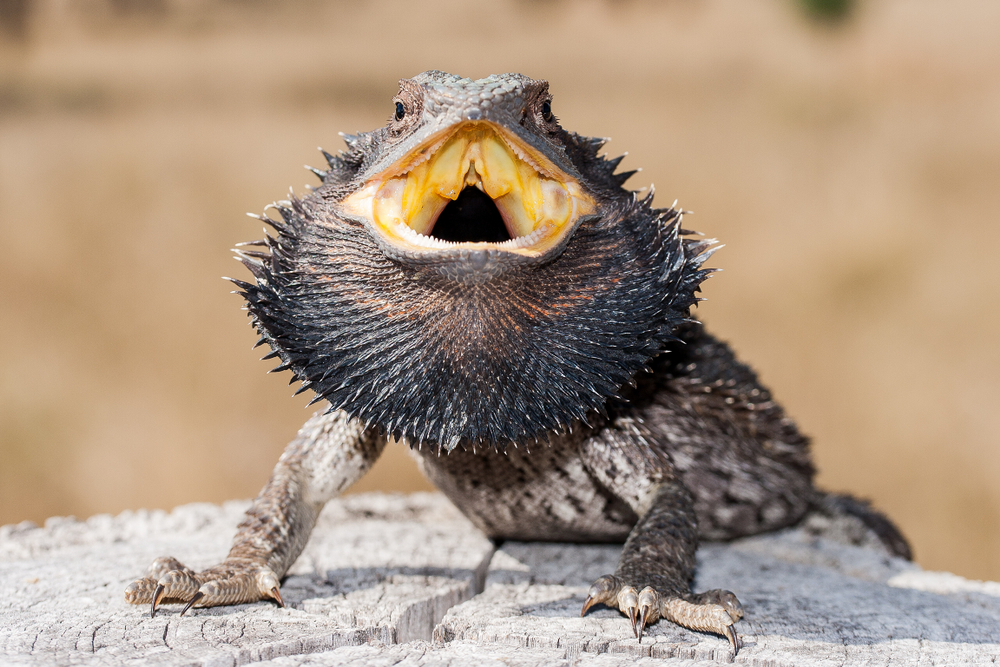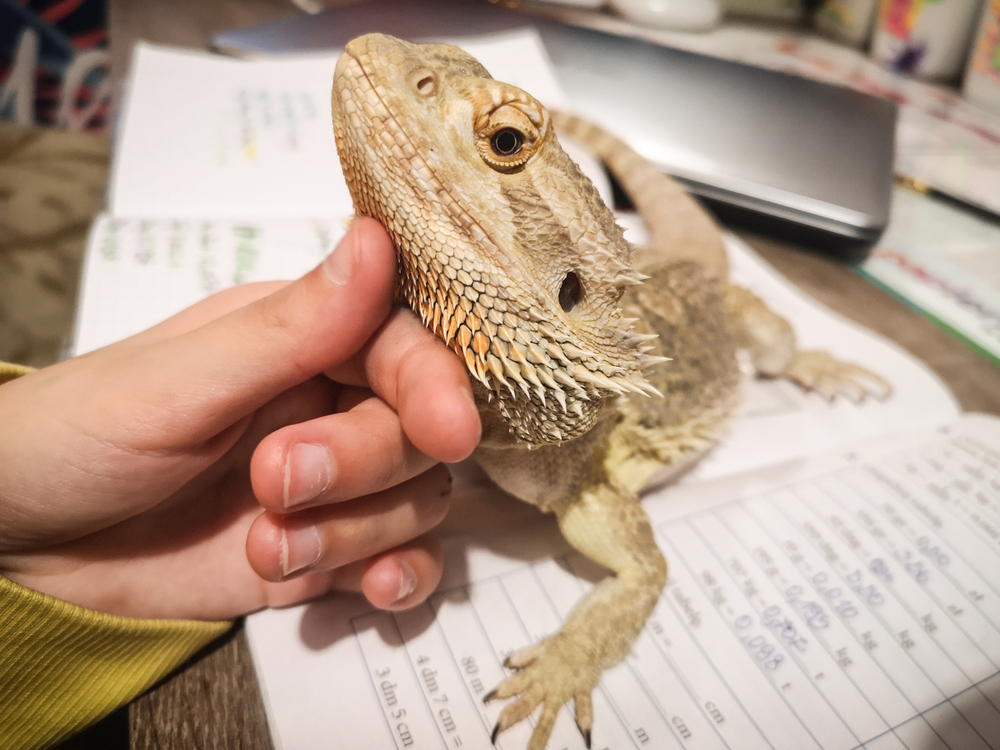The Language of the Bearded Dragon's Beard
What is that? Whether you're a new beardie parent or have enjoyed one of these unique reptiles for years, you've likely noticed your pet's extra saggy, stubbly chin skin. And if it's puffing up or turning a darker color — don't worry! Your scaly buddy is simply trying to get your attention and relay a message.

Here's what you need to know about this special reptile lingo!
Do Bearded Dragons Really Have Beards?
Yes! While it's not a perfectly coiffed goatee, bearded dragons have a hairless beard that occasionally resembles a five o'clock shadow. A bearded dragon's beard is a spine-covered pouch that inflates to appear larger and darkens. This type of "beard" is located under the pet's chin, in the typical beard area, giving this expressive feature its name.
What Color Does the Beard Change To?
When everything is a-ok, the bearded dragon's beard camouflages to the pet's usual hues of rusty reds, muted oranges, soft yellows, dusty browns, and rich blacks. When things are off balance, the beard darkens to a nearly black color and may puff up to let you know the pet needs some

TLC.This temporary color change can happen quickly or slowly over time, depending on the trigger.
Why Does the Beard Darken or Puff Up?
Think of the scaly appendage as a barometer of your pet's physical and mental health. Use this list to help you learn what's going on. You might notice a darkened or expanded beard when the pet is:
- Feeling fearful. Is the family cat too close to the tank? Is the pet being handled without a gentle touch? Are you playing music too loudly? Remove the fear-inducing trigger.
- Experiencing anger. Is the toddler tapping on the glass of the pet's habitat? Did you forget to feed the pet and skip your usual playtime? Be mindful and get back to your routine and eliminate anger-causing situations.
- Stressed or sick. Is the pet also lethargic, not eating, or acting "off"? It's time to call the veterinarian with your questions.
- Feeling chilly. Is your bearded dragon's body black (not just the beard)? Is the terrarium's heat bulb burnt out? Did the heating mat get unplugged? Do a quick check of the habitat for anything that looks amiss.
- Adjusting to a new environment, person, or enclosure. The move from a pet store to your home is exciting for you but initially scary for a pet. Ditto for when you buy the pet a new habitat. Soon they will realize they have all they need to feel safe and cozy!
- Feeling cramped. If you house several beardies, this might signal to their buddies which area of the habitat is their territory. Consider adding another terrarium or two to your home to give each pet its own living quarters.
- Being handled too much. A blackened beard may signal it's time for a break, and the pet wants to rest.
It's also worth noting the dragon's beard isn't the only body part that can darken. You might notice black spots on other areas of the pet's body — like the torso or tail — when your attention is needed. If this temporary discoloration lasts for more than a week, it's time to call the vet for guidance. When the trigger passes or is remedied, the beard should return to its usual color. Of course, you can always call the vet earlier, especially if there are other irregularities in your pet's appearance, mood, or behaviors.

Isn't it cool that such a small feature, like a beard, can tell you so much about your pet? Once you learn to speak the language of the beard (and body!), you'll be able to respond with the help needed and bond even more with your cool reptile pet.
Learn about bearded dragon care, feeding, and more in The Ultimate Guide to Bearded Dragons.
